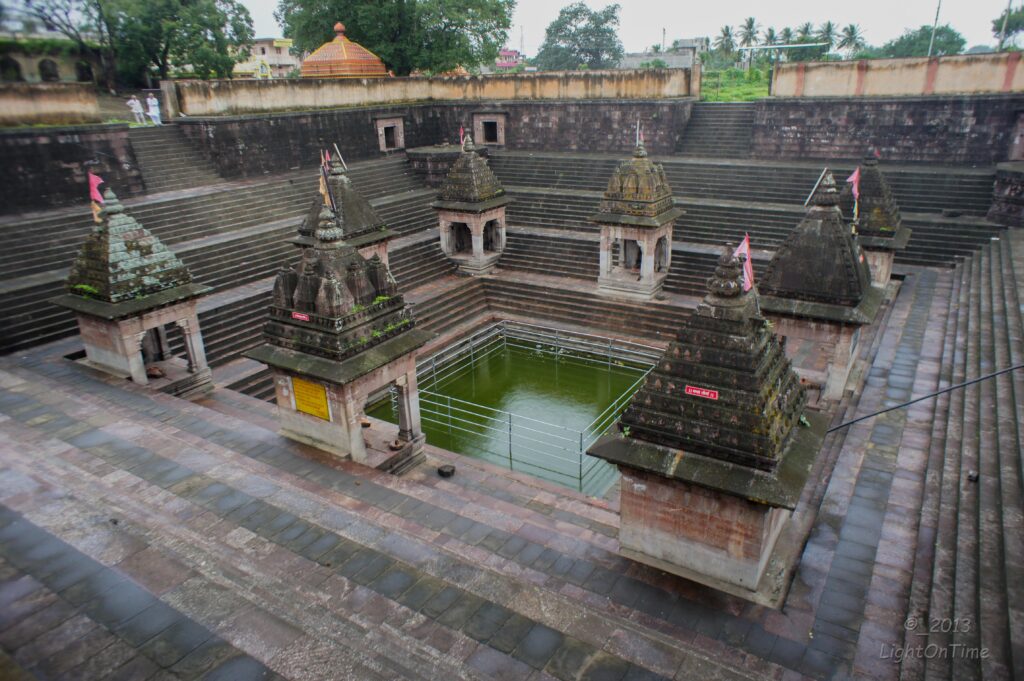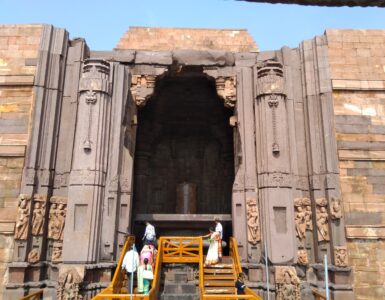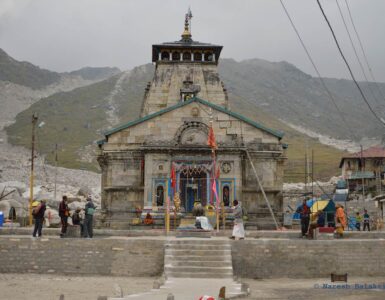Grishneshwar Jyotirlinga is an important pilgrimage site in India and is dedicated to Lord Shiva. It is situated near the famous Ellora Caves in Maharashtra and is one of the 12 Jyotirlingas in the country. This ancient temple attracts devotees from all over the world who come to seek the blessings of Lord Shiva.

Legend has it that the temple was built by a devotee named Grishneshwar who wanted to build a temple for Lord Shiva. Lord Shiva appeared in his dream and told him that a Shivalinga was buried under the ground in that place. Grishneshwar dug up the spot and found the Shivalinga. He then built a temple over it, which is now known as the Grishneshwar Jyotirlinga.
The temple is built in the south Indian architectural style and is made of red stones. The temple complex consists of several small shrines dedicated to different deities, and the main sanctum houses the Jyotirlinga. The temple also has a holy pond called Shivalaya, where devotees can take a dip before offering their prayers.
The Grishneshwar Jyotirlinga is known for its unique architecture and intricate carvings. The temple has been renovated several times over the centuries, but it still retains its ancient charm. The main entrance of the temple is adorned with beautiful carvings of Lord Shiva and the other deities.

Devotees believe that a visit to the Grishneshwar Jyotirlinga can bring blessings and prosperity in their lives. The temple is particularly crowded during the Mahashivratri festival, which is celebrated with great fervor and devotion.
In addition to being a popular pilgrimage site, the Grishneshwar Jyotirlinga also attracts tourists who come to admire the temple’s architecture and learn about its history. The temple is easily accessible by road, and there are several hotels and guesthouses in the vicinity for accommodation.
Overall, the Grishneshwar Jyotirlinga is a must-visit destination for anyone interested in Hindu mythology and ancient Indian architecture. It is a place of great spiritual significance and a testament to India’s rich cultural heritage.






 The Bharatah is a website dedicated for exhibit about the Great Culture, Society, Literature, Economy, Education, History and Peoples of Spiritual, Irresistible, Developing, Intelligent, Vibrant, Diverse, Unite, Incredible India (Bharat). You can also get facts and trivia of traditions, festivals, arts, science, technology, statistical Facts about India. On this website you can explore Adventurous, Religious, Beaches, Hill Station Wildlife and Historic Tourist places of India.
The Bharatah is a website dedicated for exhibit about the Great Culture, Society, Literature, Economy, Education, History and Peoples of Spiritual, Irresistible, Developing, Intelligent, Vibrant, Diverse, Unite, Incredible India (Bharat). You can also get facts and trivia of traditions, festivals, arts, science, technology, statistical Facts about India. On this website you can explore Adventurous, Religious, Beaches, Hill Station Wildlife and Historic Tourist places of India.
Add comment